
Contents
- 1. Kashmiri Shaivites [non-duality between Shiva and Energy (Shakti)]
- 2. The Nath sect
- 3. The path of spiritual practice of Raseshvar
- 4. Virshaivas (Lingayat)
- 5. Shiva and Divine Energy (Shakti)
1. Kashmiri Shaivites [non-duality between Shiva and Energy (Shakti)]
In the period when the Shaiva saints and scholars from South India were advocating the Shaiva philosophy and were preaching the doctrines from the Darshan, a centre for worship of Shiva was established in Kashmir in India. The tradition of this ‘Kashmiri Shaiva sect’ was based on the philosophy of non-duality. According to the Shivasutras this Darshan came to be known as ‘Pratyabhidnyadarshan’, ‘Sanvittantra’, ‘Spandanshastra’, ‘Shambhavadvaitdarshan’ or ‘Trimakdarshan’. Around the year 854 Kallatacharya wrote a book named ‘Spandakarika’. This text has three chapters known as ‘Nishpanda’ and fifty-two stanzas in all.
The Kashmiri Shaiva sect is further subdivided into two branches namely – science of vibrations (spandanshastra) and science of suprasensorial knowledge (pratyabhidnyashastra). The proponents of the former were ‘Vasugupta’ and his disciple ‘Kallat’ whereas that of the latter was‘Somanand’.
1.1 Science of vibrations (spandanshastra)
Followers of this school of thought propound that any creator or material cause is not required for creation of the universe. Followers of the Vedanta consider The Lord as the Creator but followers of the science of vibrations do not. Further they deny the existence of the Great Illusion (Maya) which is responsible for the illusion. In short, they do not believe in the doctrine of Shri Shankaracharya that the ‘world is false’. According to them The Lord is independent. He creates all objects according to His energy of volition (ichchashakti). He projects the entire universe in such a way as if it were distinct from Him but the reality is otherwise. Just as inspite of reflection of a person’s face in a mirror the mirror remains unaffected so also The Lord remains unchanged although the universe is manifested in Him. Hence The Lord is not the cause of creation of the universe. In short, The Lord creates the universe without any motive. Just as a siddhayogi can materialise various objects without the assistance of any external object, solely with the help of concentrated energy of volition so also does Shiva manifest the entire movable and unmovable (animate and inanimate) creation with the prowess of His divine energy of volition. Lord Maheshvar manifests in the form of infinite embodied souls. Thus according to this doctrine the embodied soul doing spiritual practice is indistinct from the Supreme Soul but due to the presence of ignorance (mala) he does not experience this non-duality. This ignorance is of three types.
-
A. Anav ignorance (mala): Considering the body to be the soul is termed as anav ignorance. When an embodied soul, out of ignorance, forgetting its free and all pervading nature regards itself to be incomplete and considers the gross body, which is in reality not the soul, to be the soul and confines itself in such a state of bondage it is described as anav ignorance.
-
B. Active ignorance (karya mala): When out of influence of the antahkaran the motor organs become active, that ignorance is known as active ignorance. For example the ego which is responsible for performing good and bad deeds leading to happiness and unhappiness.
-
C. Illusory ignorance (mayay mala): When ignorance remains in the body created from the Great Illusion it is referred to as illusory ignorance.
The principle of sound is responsible for activating all these types of ignorance. Sound is the prime energy of Shiva that leads to the generation of speech. Worldly activities occur with the help of speech, that is why ignorance is generated from this principle of sound and the embodied soul doing spiritual practice (jivatma) begins to consider itself as distinct from the Supreme Soul. Along with this energy other energies such as Amba, Vama, Roudri, Jyeshtha, etc. are also associated with Shiva. Through the energy acquired from meditation when the subconscious mind gets a manifestation of the energy of the Supreme Soul, the embodied soul becomes rid of ignorance (mala) and the subconscious mind develops the thoughtless (nirvikalpa) state. Thus the embodied soul becomes liberated and itself becomes the Supreme Soul. This vision itself is termed as Bhairav because He Himself grants His own vision.
1.2 Science of suprasensorial knowledge (pratyabhidnyashastra)
The branch of the Kashmiri Shaiva sect established by ‘Somanand’ in the tenth century is famous as suprasensorial knowledge. The name of their holy text is ‘Shivadrushti’. His disciple Udayakar wrote this main holy text of this sect.
The philosophy of this sect as regards the embodied soul doing spiritual practice and the Supreme Soul is similar to that of the science of vibrations. In this sub-sect the knowledge that ‘He is Him’ is termed as science of suprasensorial knowledge. In the Shvetashvatar and some other Upanishads is a quote which means that when He (the Supreme Soul) manifests, all objects manifest. All objects are illuminated by His light alone. Thus our energy of knowledge is in reality that of The Lord and every object is realised by us through this illuminating energy. Since we possess knowledge and are active, we are in reality subtle parts of The Lord; but there is no way limiting this subtle portion. Hence one should consider that ‘I am The Lord’. However in our present state we do not realise the nature of The Lord, His knowledge and the Bliss enjoyed through Him. Hence one does not realise that ‘I myself am The Lord’; but basically we are The Lord itself. A young lady falls deeply in love with a young man hearing about his qualities but when she happens to meet him not realising who he is she views him as an ordinary individual and does not feel happy. However when she is told that this is the same person towards whose qualities she was attracted, she feels elated and surrenders unto him. The state of the embodied soul undertaking spiritual practice (jivatma) and the Supreme Soul (Parmatma) is the same. Though the embodied soul is unaware of the Bliss in the state of of Godliness it is still The Lord Himself. It does not realise The Lord because it is ignorant of the fact that it possesses all the qualities of The Lord. The Guru grants that soul the realisation of this divinity within itself. As a result the embodied soul gets drowned in the ocean of immense Bliss. According to the science of vibrations (spandanshastra), when the mind acquires a manifestation of Bhairav (Lord) in the state of meditation, ignorance (mala) is destroyed and Bliss of non-duality is experienced. However according to the science of suprasensorial knowledge (pratyabhidnyashastra) the sole path of acquisition of Bliss of non-duality is to experience The Supreme God within oneself.
According to Kashmiri Shaivites as well as those of the school of suprasensorial knowledge the blending of Shiva and Divine Energy (Shakti) that is Kameshvar and Kameshvari is the supreme principle of non-duality. The nature of the soul being divine consciousness (chaitanya) it is present in all living beings in an unmanifest form. That itself is defined as Parasamvit, The Supreme God (Parameshvar) or Shiva. The Shiva principle present in every embodied soul is itself the soul principle. The Supreme God is believed to have two parts – that constituting the universe and that beyond the universe. Although the universal form of The Supreme God is present in every object yet through the part beyond the universe, He is detached from all of them. The nature of this soul remains obscure due to ignorance. This ignorance is a consequence of Shiva’s wish. After enlightenment, the duality between the embodied soul (jiva) and The Supreme God (Shiva) disappears.
The supreme principle that is ‘Shiva along with Divine Energy (Shakti)’ is the ultimate truth. Divine Energy is not distinct from Shiva but is present in Him. Her external active form is sometimes gross or subtle and at other times manifest or unmanifest. The cycle of the universe is maintained by Her subtle or magnified form. Although Shiva is the support of the subtle body and the universe, without Divine Energy which is in the form of ‘i’ in Shiva, He is as good as a corpse (shava). Shiva along with Divine Energy creates everything. Just as moonlight cannot be separated from the moon so also Shiva’s Energy cannot be distinct from Him. When She manifests in the universal form, in reality Shiva alone is the creator, sustainer and annihilator and when She is unmanifest Shiva is in a state of self-radiant non-duality. Divine Energy itself is considered as the Creator of the universe ‘(चीति:स्वतन्या विश्वसिद्धि हेतु:)’ meaning the Energy self-generated through the spiritual practice is the aim of each and every attainment. She is a state of Absolute Consciousness. Despite being inseparable from Shiva She is the basic cause for creation of the universe. Her independence is the principle of vital energy. The totally radiant Supreme Soul (Parmatma) inspite of remaining in its original state sometimes manifests its infinite forms or its forms undergo dissolution due to this independent Energy. It is due to the divine sport of this Divine Energy that despite being one He appears to manifest in infinite forms. Shiva’s nature is one of the light of knowledge whereas Divine Energy is of the nature of ego. Shiva is full of divine consciousness whereas Divine Energy is responsible for generation of ego. Basically Shiva and Energy are of the nature of Absolute Consciousness and Bliss.
When The Supreme God wishes to create the universe He transforms Himself into two forms – Shiva and Divine Energy (Shakti). Shiva is of the nature of the light of knowledge while Divine Energy is of the nature of thought. At the creation of the universe this Divine Energy enlightens the universe whereas at the time of dissolution the same Energy assumes the destroyer aspect. This Divine Energy is also known as Absolute Consciousness (Chit), divine consciousness (chaitanya), freedom (svatantrya), doership (kartrutva) and energy of vibration (spanda). Consciousness (prama) exists as ‘I’ (aham) and ‘It’ (idam). The former represents Shiva and the latter, the Divine Energy (Shakti). One can experience the radiance of knowledge that is the soul principle through intellect and in the enlightened state can one get the idea of the thought. Just as one cannot see one’s face without a mirror, so also without intellect one cannot realise the true nature of the radiance of knowledge, the soul. The shava (corpse) is disfigured and neither perceives any sensation nor consciousness. Similarly without Divine Energy, that is the intellect one cannot realise the soul. Infusion of the energy of life into a dead body induces divine consciousness in it. Similarly without Divine Energy that is the energy of life, Shiva, the soul principle will appear like a shava (corpse). Thus Shiva and Divine Energy are two sides of the same coin and are therefore inseparable.
‘The Shaivites considered that Shiva without Shakti to be but a corpse. In some fearsome Shaiva sects the form of Divine Energy, the deity is depicted as dancing on Shiva’s chest laying Him down on the ground.’
For the Shaivas (worshippers of Shiva) Purush means Lord Shiva and Prakruti means Divine Energy. However unlike the followers of the concept of Brahman the Shaivites do not consider Energy to be the Great Illusion (Maya) and hence as illusory since the very pervasiveness of Shiva Himself is this movable and unmovable (animate and inanimate) creation. How can that be unreal? Based on this concept their path of establishing communion with The Supreme God present in this movable and unmovable creation based on spiritual love appears to be entirely derived from devotion. Although yoga, penance and meditation are special features of the spiritual practice of the Shaivites yet undoubtedly devotion unto Lord Shiva has been accorded the prime seat in the populace.
2. The Nath sect
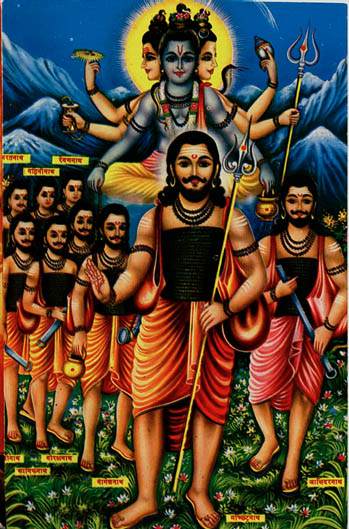
‘This is a yoga dominant Shaiva sect. It was founded around 900-1000 A.D. Its philosophy is similar to that of the Kashmiri Shaivas. The followers of this sect attribute importance to the spiritual practice of yoga and consider Shiva to be the foremost Master (Adinath).
‘Since the Supreme Guru and the deity of worship of this sect is the first Master (Adinath) Shiva, this sect is known as the Nath sect. Acquisition of the universal nature of Nath, that is of the Shiva principle itself is the ultimate aim of the followers of this sect. That is why they prefix the title nath to their names. As this sect is yoga dominant and also since acquisition of the state of a perfected one (siddhavastha) or of avadhut (avadhutavastha) is the aim of this sect it is also known as the Yoga, Siddha and Avadhut sect.
Gorakshanath is the founder of this sect. Holy texts written by Gorakshanath are the principal holy texts of this sect. The Guru lineage of this sect is Adinath – Matsyendranath – Gorakshanath. This event occurred in the eleventh or twelfth century A.D.
2.1 Doctrine
The philosophy of the Nath sect is influenced by the Kashmiri Shaiva sect. The concept of the conjoint energy in Shiva-Divine Energy (Shakti) which came to be incorporated in it from the Kashmiri tradition itself and the concept manifested in its perfect and adorable form in Saint Dnyaneshvar’s book Amrutanubhav. Siddhasiddhantapaddhati is a popularly accepted Sanskrut holy text by Gorakshanath. It describes some of the basic doctrines of this sect as given below.
-
A. Shiva along with Divine Energy (Shakti): At the outset Gorakshanath has offered obeisance to Lord Adinath who is accompanied by the Divine Energy. According to Gorakshanath, Adinath Shiva Himself is the ultimate truth, is Self-radiant, Self-conscious, infinite, immortal, beyond the manifest and unmanifest and duality and non-duality. This Shiva principle also comprises of Divine Energy; but this Energy is not distinct from Shiva, She is incorporated in Him. She is responsible for creation, sustenance and dissolution of the universe. The nature of ths Energy is continuous activity which at times extends from the gross to the subtle and at other times from the manifest to the unmanifest. The cycle of the universe continues due to the progress or regression of this Energy. Shiva along with Energy is the support of the embodied soul (pinda) and the universe (Brahmanda).
-
B. The embodied soul and the universe: The second doctrine of this sect is that all that which is in the universe is also present in the embodied soul. Hence knowledge of the embodied soul has acquired special importance in the Goraksha philosophy. Gorakshanath says that the yogi who realises that both the movable (चर) and the unmovable (अचर) are present in the embodied soul, acquires knowledge about the embodied soul. Getting this experience of the divine nectar (amrutanubhav) and becoming immortal by merging into the Omniscient Shiva present in the embodied soul and the universe is the ultimate target of a Nathyogi. This itself is termed as Liberation while still embodied (jivanmukti). According to saints of the Nath sect Liberation is to be first acquired in the perfect (siddha) body and later in the divine body. The perfect or divine body refers to the immortal spiritual body. It is free from the impure Great Illusion (Maya) but is made up of the pure Great Illusion. In this state of the body saints (siddhas) guide other seekers as Gurus. Acquisition of an immortal and a mature body is a primary requirement of a saint as due to this body alone the saint acquires the Supreme Liberation (Para Mukti). This itself is known as perfection of the body (kayasiddhi). The spiritual practice undertaken by saints of the Nath sect to achieve kayasiddhi is known as reverse spiritual practice. This spiritual practice is a yogic practice. These yogic techniques of the Nathyogis convert the downward tendencies of those aspiring to reach the zenith and take the saint to His ultimate state, that is immortality in the perfect body.
The sun (surya) and moon (chandra) referred to in the Path of Deliberate Rigour (Hathayoga) are the Ida and Pingala channels (nadis) in the body and their union is that of the pran and apan vital energies. According to Gorakshanath this sun and moon have a hidden meaning. The book Siddhasiddhantapaddhati states that the body originates from action, desire, the moon, the sun and fire. Of these the moon symbolises ras (liquor) or Som and the sun represents the fire (agni). Som is that which is experienced while fire is that which experiences it. The semen of a man is composed of fire and the menstrual flow of a woman is generated by the moon. The subtle body is created by the union of these two. Som or the moon is an infinite and immortal principle and remains with Shiva whereas the sun is a finite and mortal principle and resides within Divine Energy (Shakti).
Spiritual energy (kundalini) lies in a dormant state in the human body and Shiva resides in the Sahasrar chakra in the head. When this dormant energy in the Agni chakra merges with Shiva in the Sahasrar or Shunya chakra, yogis attain a natural state of superconsciousness (sahajsamadhi) which imparts Liberation and Supreme Bliss. This itself is described as the union of the subtle body and the universe (pinda-brahmandaikya or samarasikaran).’
3. The path of spiritual practice of Raseshvar
This sect professes faith in Adinath Shiva and shares some similarities regarding spiritual practice with the body (kayasadhana) with followers of the Nath sect. The spiritual practice of this sect has been described in various holy texts by those perfected (siddha) in rasa such as ‘Rasaratnakar’ by Nagarjun,‘Rasahruday’ by Govindbhagvatpadacharya and ‘Sakarsiddhi’ by Vishnuswami.
अभ्रकस्तव बीजं तु मम बीजं तु पारद: ।
अनर्योर्मीलनं देवि मृत्युदारिद्य्रनाशनम् ।। – सर्वदर्शनसंग्रह ९:४
Meaning: O deity (Parvati), mica is Your ovum and mercury is My sperm (semen). The union of these two eliminates death and poverty.
Seekers belonging to this sect believe that mercury possesses the potential to bestow the Final Liberation (Moksha) in this birth itself. Hence it is more beneficial to attain the Final Liberation when alive than after death. According to them to attain the Final Liberation the body has to be strong, healthy and fit. Mercury oxide has the potential to impart these benefits to the body. Mercury (para) is described as Raseshvar, one which can take one across (par) the ocean of materialistic life. In this context Shiva says – Consumption of solutions containing mercury makes the body strong and healthy. This facilitates attainment of Self-realisation. If a mixture of mercury and mica is drawn upwards with the help of a particular yantra (device) into the body then a humour (rasa) which can make the body immortal is generated. The three states of mercury are inert, inactive and bound. Inert mercury cures illnesses, inactive mercury bestows longevity and bound mercury imparts the ability to fly. Eight rituals such as svedan, murchan, pavan, nirodhan, maran, etc. have been described with regard to mercury. Saints of the Nath sect had a close association with Raseshvar. It is believed that those belonging to the Raseshvar sect knew the secret of creating gold.
4. Virshaivas (Lingayat)
These Shaivites adorn the (Shiva) linga and hence are known as Lingayats. This sect was founded by Panchacharya and propagated by Basveshvar. Their basic texts are the Basav Puran and the Channabasav Puran. The Gurus of the Lingayats are known as Jangam. Jangam means a worshipper of a chalalinga. This sect has become popular in Karnataka in India.
The non-dual Supreme Brahman manifesting in the form of Absolute Truth (Sat), Absolute Consciousness (Chit) and Bliss (Anand) is itself known as Shiva principle. It is also known as ‘sthal ’. It is the primal causative bija of the creation of the universe consisting of principles such as the Mahat principle. Similarly the visible and invisible creation arising from the union of the Prakruti and Purush principles dissolves into It at the time of dissolution of the universe. Hence it has acquired the name sthal (स्थल) by combination of ‘stha (स्थ)’ from the primal causative bija and ‘l (ल)’from dissolution (laya). The sthal is of two types namely lingasthal and angasthal. Lingasthal refers to the deity of worship, that is Lord Shiva and angasthal is the embodied soul worshipping Him. (Lingasthal is thus The Lord and angasthal is the devotee.) The union of this is deity of worship, Shiva with that of the worshipping embodied soul is known as the ‘blending of the linganga (linganga samarasya)’.
The lingasthal has three parts – bhavalinga, pranalinga and ishtalinga. They are also named nishkal, sakalnishkal and sakal respectively. Bhavalinga is the Absolute Truth form of Shiva as the Supreme Brahman whereas the pranalinga is the Absolute Consciousness nature and ishtalinga is the Blissful (Anand) form. The bhavalinga is the most supreme principle, the pranalinga is the most subtle and the ishtalinga is its gross manifestation. This triad of lingas gets converted into kala, nada and bindu under the influence of the prayoga, mantra and kriya. Each of these lingas is subdivided into two parts. The six lingas – mahalinga or mahatmyalinga, prasadlinga and prasadhanlinga, chiralinga, Shivalinga, Gurulinga and acharlinga are known as ‘shatsthal’. These six types of lingas get endowed with divine consciousness and assume six forms. They possess six Divine Energies (Shakti). They are named Chitshakti, Parashakti, Ichchashakti, Adishakti, Dnyanshakti and Kriyashakti respectively.
The Divine Energy within Lord Shiva gets transformed into two with Her own wish. The first Energy is named ‘Kala’. She resides with Shiva. The second is named ‘Bhakti’ and She resides within the embodied soul, that is the devotee. This active Energy responsible for leading the embodied soul to Shiva is itself devotion (bhakti). Hence the Lingayats consider intense devotion unto Lord Shiva as the main spiritual practice to attain the Final Liberation (Moksha). The union of the Supreme Soul, Shiva and the embodied soul doing spiritual practice (jivatma) is their ultimate goal.
The principle aim of the angasthal (embodied soul) is devotion. Devotion is of three types – yogang, bhogang and tyagang. Due to yogang there is union of the embodied soul with Lord Shiva. Tyagang helps the embodied soul to realise the impersonal nature of the universe and hence the embodied soul sacrifices it. Bhogang brings about a merger of the embodied soul with Lord Shiva. The ultimate objective of the Virshaivite is permanent union of the embodied soul and Shiva. One can perceive the influence of the Vaishnavite philosophy of qualified non-duality (Vishishtadvait) on their philosophy.
(Based on Panch Upasanapanth. First edition : Shrirama navami, Shake 1901, pages 68-91. Author : Prof. R.R. Gosavi. Publisher : Manohar Y. Joshi. Prasad Publications, 1892, Sadashiv Peth, Pune 411 030.)
5. Shiva and Divine Energy (Shakti)
| Shiva | Energy | |
|---|---|---|
| 1. Special characteristics |
Form of yoga* (Union with God) |
Form of spiritual knowledge |
| 2. Mission | Detachment | Towards materialistic attachment |
| 3. Spiritual level | Supreme* | Superior |
| 4. Asking for offerings | Nothing | A subordinate type of deity (Energy) asks ‘Give me such and such thing to fulfill such and such task’ |
| 5. Annual sacrifice | Not offered** | Is offered |
* श्रद्धावाँल्लभते ज्ञानं तत्पर: संयतेन्द्रिय: । – श्रीमद्भगवद्गीता ४:३९
Meaning: Man who is endowed with the qualities of intense faith, is prompt in action and has mastery over his senses acquires spiritual knowledge.
** No sacrifice is offered even to the combined form of Shiva and Divine Energy (Shakti).
Reference: Sanatan Sanstha’s Holy Text ‘Shiva’

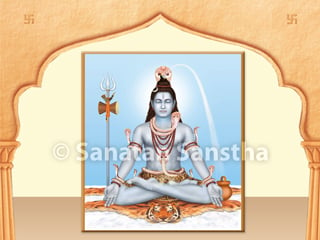
 Ritualistic worship of Shiva
Ritualistic worship of Shiva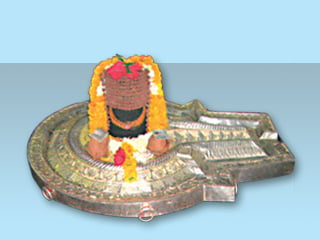 12 Jyotirlinga
12 Jyotirlinga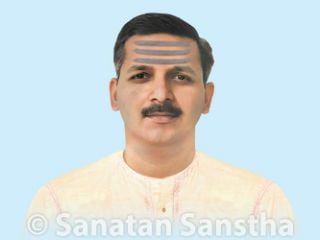 Bhasma
Bhasma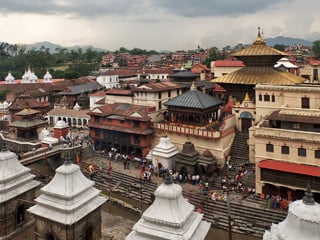 What is the concept of Final Liberation as per the Pashupat sect?
What is the concept of Final Liberation as per the Pashupat sect?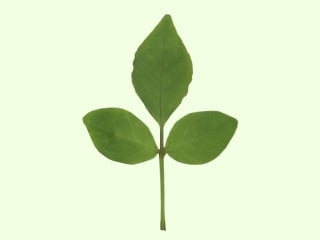 Why are trifoliate bel leaves offered to Lord Shiva ?
Why are trifoliate bel leaves offered to Lord Shiva ?
Incredible metaphysics. All makes sense